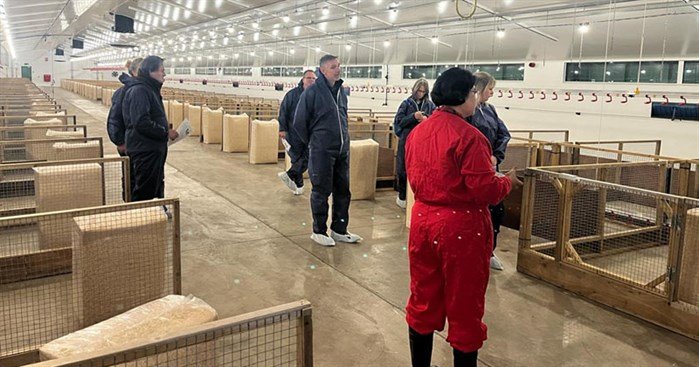Midlothian Science Zone Business Forum visit SRUC facilities ‘in the zone’
In the latest of our series of Business Forums showcasing expertise and facilities in Midlothian Science Zone, attendees went behind the scenes of SRUC (Scotland’s Rural College) with presentations on research and animal welfare projects, and visit to CT Scanner Unit and Allermuir Avian Innovation & Skills Centre.
On Tuesday1st November, Midlothian Science Zone Business Forum guests gathered for a networking lunch prior to visits to SRUC (Scotland’s Rural College) CT Scanner Unit and Allermuir Avian Innovation and Skills Centre (AISC), on the Bush Estate.
Professor David Hopkins, SRUC Dean of Faculty, welcomed participants and introduced the SRUC partnerships and research centres within Midlothian Science Zone (MSZ) on the Bush Estate, Pentlands Science Park, and Roslin Instituteon the University of Edinburgh’s Easter Bush Campus.
This wealth of research and expertise, together with other partners, identifies this region as a centre of excellence and expertise. SRUC also has offices across Scotland including Business and Advisory Consultancy offices for rural businesses.
Dr Nicola Lambe, Sheep Geneticist, explained the invaluable role that the mobile CT Scanning Unit undertakes across the country investigating the body composition, fat and muscle and variation in vertebrate numbers of sheep as part of the National Breeding Programme. Research has helped with meat quality, methane production and breeding suitability. Additionally, the unit is used for pigs, fish, chickens and zoological studies including penguins.
A short walk took us to the neighbouring Allermuir Avian Innovation and Skills Centre to hear about the research undertaken in the Beef & Sheep Centre from Professor Rainer Roehe. The chambers at SRUC's GreenCow facility measure the effects of feed intake and methane emissions, animal health and meat quality, as farmers strive towards more sustainable “Smart Farming” - microbiome driven breeding can reduce methane emissions by 17% per generation.
Dr Emma Baxter, animal welfare and behaviour scientist, spoke about “heads and tails” namely Emoti-pig the detection of facial expression and Tail-tech – looking at tail posture as indicators of emotion and welfare issues in pigs. These advances in continuous unobtrusive and repeatable technology have produced a Grimace Scale in pigs as well as prewarning signals of tail biting outbreaks.
Finally, the group were escorted on a fascinating tour of the Allermuir Avian Innovation and Skills Centre. After putting on PPE overalls, Dr Farina Khattak walked us through what is the UK’s largest facility to improve avian nutrition, health and welfare, starting with the Brooder House with moisture-controlled humidity used for poultry, turkeys and even partridge.
This and the Multi-Purpose Poultry House are used for nutritional and behavioural trials for businesses and students alike. We also saw barley production for layers, part of research into the role of enrichment to increase and improve egg production and quality.
The tour and presentations showcased the wealth of facilities, services and expertise of SRUC in the zone and beyond for research, study and business collaboration. This also highlighted the expertise of the community across the Midlothian Science Zone.
If you missed this MSZ Business Forum and are interested in finding out more about the research and expertise that were presented, please email Emma McCallum, MSZ Project Coordinator.
The purpose of MSZ Business Forum is to create an opportunity for discussion, collaboration and awareness of other businesses 'in the zone'. The next event will be held in January 2023, and details of host and theme will be announced soon - as always there will be time for networking.
To be kept informed of forthcoming events or opportunities for collaboration, please contact Emma McCallum, Project Coordinator.


